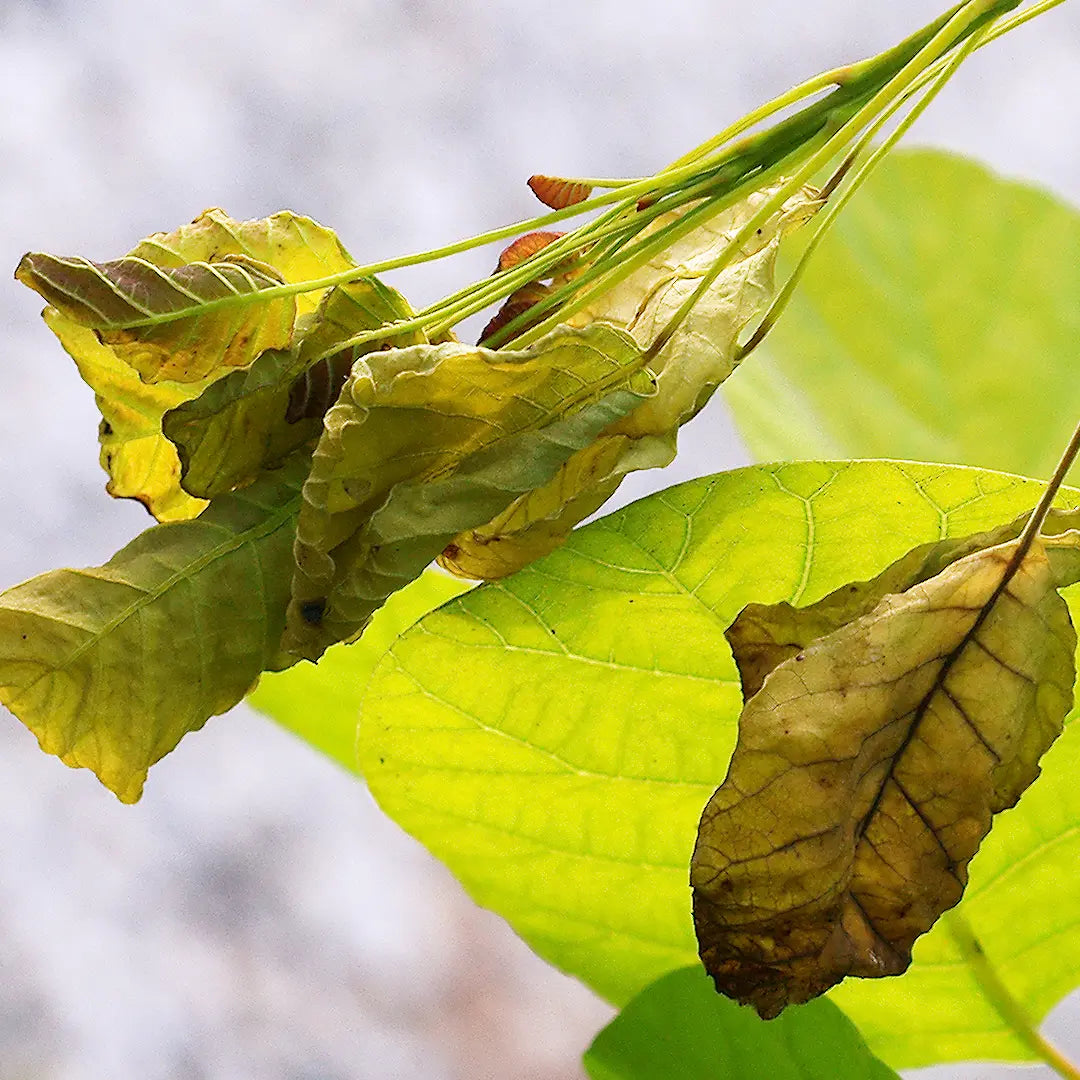
Verticillium Wilt
Verticillium wilt is a persistent and devastating soil-borne fungal disease that affects chilli plants and various other crops. This comprehensive guide aims to provide you with valuable information about identifying, understanding the symptoms, and managing this disease to ensure the healthy growth of your chilli plants. As a gardener in New Zealand, it is crucial to be familiar with Verticillium wilt, especially given the country's unique seasonal patterns.
Collapsible content
Identification
Verticillium wilt is caused by the fungi Verticillium dahliae and Verticillium albo-atrum, which can remain dormant in the soil for several years, making it a challenging disease to control. Identifying this disease at an early stage is essential to prevent its spread and reduce its impact on your chilli plants.
- Soil Testing: To determine the presence of Verticillium wilt in your garden, the first step is to perform a soil test. You can collect soil samples and send them to a local laboratory for analysis. If the test results indicate the presence of Verticillium spores, it is essential to take preventive measures to protect your chilli plants.
- Plant Inspection: Regularly inspect your chilli plants for any signs of Verticillium wilt. Pay close attention to the leaves, stems, and roots. If you notice symptoms like wilting, yellowing, or stunted growth, the chances are high that your plants are infected with the disease.
- Laboratory Confirmation: If you suspect your chilli plants are infected with Verticillium wilt, it is essential to get a laboratory confirmation. Collect samples of the affected plant tissue and send them to a plant pathology laboratory for analysis. The laboratory tests will provide you with definitive information about the presence of the disease.
Symptoms
Verticillium wilt affects the vascular system of chilli plants, leading to reduced water and nutrient transport, eventually causing the plants to wilt and die. The symptoms may vary depending on the stage of the infection and the chilli plant variety. However, some common symptoms include:
- Leaf Symptoms: The initial symptoms of Verticillium wilt appear on the leaves. You may notice the yellowing of leaves, beginning from the margins and moving inwards. As the disease progresses, the leaves may wilt, curl, and eventually fall off. In some cases, yellowing and wilting may occur on only one side of the plant or individual branches.
- Stem Symptoms: As Verticillium wilt infects the vascular system, it causes the plant's stem to develop brown streaks or discolouration. If you make a longitudinal cut on the stem, you may notice a dark brown discolouration of the vascular tissue.
- Root Symptoms: Infected chilli plants may develop black or dark brown roots, indicating the presence of the fungus in the root system. In severe cases, the roots may rot, leading to the plant's death.
- Overall Plant Symptoms: Verticillium wilt-infected chilli plants may experience stunted growth and reduced yields. In severe cases, the entire plant may wilt and die. It is crucial to monitor your plants closely and take action as soon as you notice any of these symptoms.
Prevention and Management
Preventing and managing Verticillium wilt is crucial to ensure the healthy growth of your chilli plants. The following are some effective strategies to prevent and manage this disease in your garden.
- Crop Rotation: Practising crop rotation can significantly reduce the risk of Verticillium wilt in your garden. Rotate chilli plants with non-host crops, such as corn or cereals, for at least three years to help suppress the fungal spores in the soil.
- Soil Solarisation: Soil solarisation is an effective method to reduce Verticillium spores in the soil. Cover the soil with a clear plastic sheet during the hottest months (December to February in New Zealand) and leave it for 4-6 weeks. The heat generated under the plastic sheet will help kill the fungal spores.
- Resistant Varieties: Choose chilli plant varieties that are resistant to Verticillium wilt. Consult local nurseries or seed suppliers for information on resistant varieties suitable for your region.
- Proper Irrigation: Overwatering can create favourable conditions for the development of Verticillium wilt. Ensure proper drainage and avoid overwatering your chilli plants. Water your plants early in the morning, allowing the leaves to dry before the evening to reduce the risk of infection.
- Healthy Soil: Maintain healthy soil by adding organic matter and ensuring a balanced pH level. Healthy soil promotes strong root systems, making your chilli plants more resistant to diseases, including Verticillium wilt.
- Biological Control: Some beneficial microorganisms, such as Trichoderma spp., can help suppress Verticillium wilt by competing with the pathogen for resources. Incorporate these beneficial microorganisms into your soil to improve its overall health and protect your chilli plants from disease.
- Chemical Control: In severe cases, you may need to use chemical fungicides to control Verticillium wilt. However, use them cautiously and follow the manufacturer's instructions carefully, as the excessive use of chemicals can harm the environment and your plants.
- Monitoring and Early Detection: Regularly inspect your chilli plants for any signs of Verticillium wilt. Early detection and prompt action can prevent the spread of the disease and reduce its impact on your plants.
In conclusion, understanding and managing Verticillium wilt is essential to ensure the healthy growth of your chilli plants in New Zealand. By implementing the preventive measures and management strategies discussed in this guide, you can effectively protect your plants from this devastating disease and enjoy a bountiful harvest.
